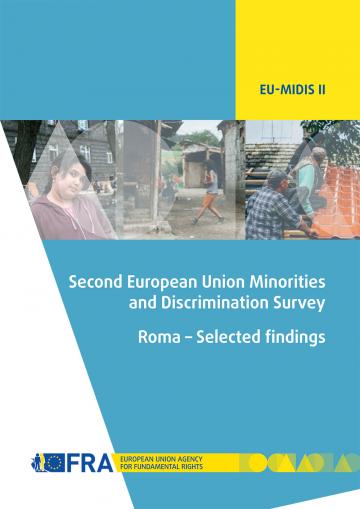Help us make the FRA website better for you!
Take part in a one-to-one session and help us improve the FRA website. It will take about 30 minutes of your time.

Second European Union Minorities and Discrimination Survey Roma – Selected findings
Data included in the Roma report concerning the sections on paid work, housing and participation in education are updated in FRA’s data explorer and the survey main results report after reassessment of weights and definitions used.
Highlighting persisting barriers to employment, education, housing and health services, this report also reveals that four out of 10 Roma surveyed felt discriminated against at least once in the past five years – yet only a fraction pursued the incident. While sobering, this report presents vital information that can serve as a unique resource for policymakers committed to ensuring that Roma are treated equally with respect to their fundamental rights.
The report is based on a survey that collected information on almost 34,000 persons living in Roma households in nine European Union (EU) Member States, derived from nearly 8,000 face-to-face interviews with Roma. It presents a selection of results from FRA’s Second European Union Minorities and Discrimination Survey (EU-MIDIS II), which surveyed around 26,000 people with immigrant or ethnic minority background living in the EU. The European Union Minorities and Discrimination Survey is a major part of the agency’s commitment to collecting and publishing data on groups not covered in general population surveys. It is the third survey of the agency to focus on Roma.
Contents









